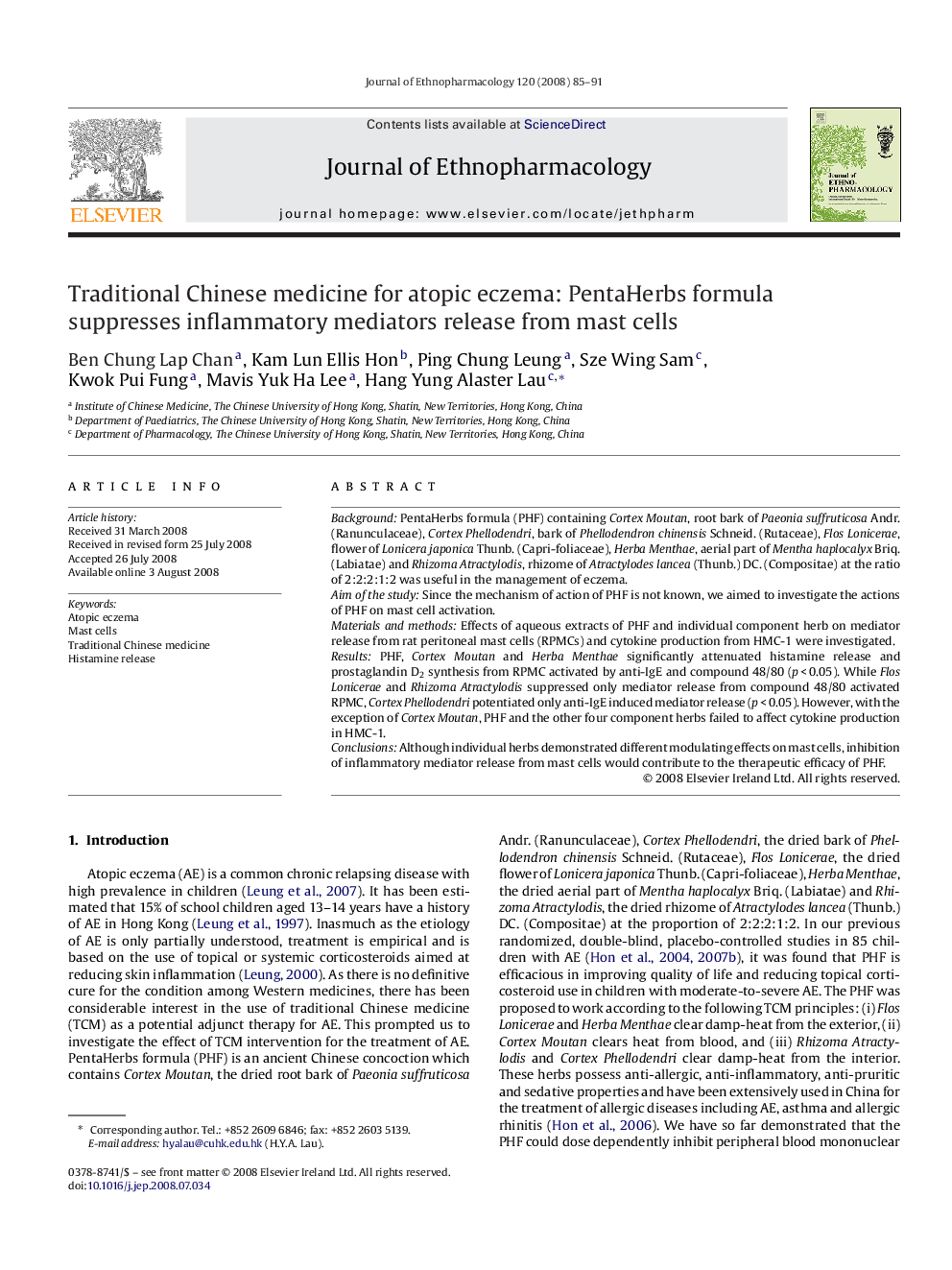| Article ID | Journal | Published Year | Pages | File Type |
|---|---|---|---|---|
| 2547441 | Journal of Ethnopharmacology | 2008 | 7 Pages |
BackgroundPentaHerbs formula (PHF) containing Cortex Moutan, root bark of Paeonia suffruticosa Andr. (Ranunculaceae), Cortex Phellodendri, bark of Phellodendron chinensis Schneid. (Rutaceae), Flos Lonicerae, flower of Lonicera japonica Thunb. (Capri-foliaceae), Herba Menthae, aerial part of Mentha haplocalyx Briq. (Labiatae) and Rhizoma Atractylodis, rhizome of Atractylodes lancea (Thunb.) DC. (Compositae) at the ratio of 2:2:2:1:2 was useful in the management of eczema.Aim of the studySince the mechanism of action of PHF is not known, we aimed to investigate the actions of PHF on mast cell activation.Materials and methodsEffects of aqueous extracts of PHF and individual component herb on mediator release from rat peritoneal mast cells (RPMCs) and cytokine production from HMC-1 were investigated.ResultsPHF, Cortex Moutan and Herba Menthae significantly attenuated histamine release and prostaglandin D2 synthesis from RPMC activated by anti-IgE and compound 48/80 (p < 0.05). While Flos Lonicerae and Rhizoma Atractylodis suppressed only mediator release from compound 48/80 activated RPMC, Cortex Phellodendri potentiated only anti-IgE induced mediator release (p < 0.05). However, with the exception of Cortex Moutan, PHF and the other four component herbs failed to affect cytokine production in HMC-1.ConclusionsAlthough individual herbs demonstrated different modulating effects on mast cells, inhibition of inflammatory mediator release from mast cells would contribute to the therapeutic efficacy of PHF.
